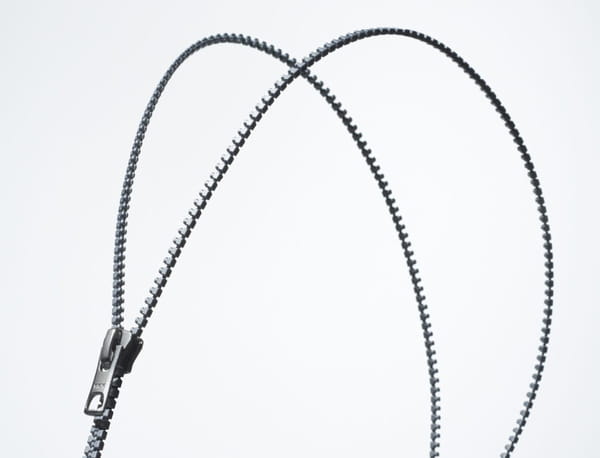A change in size… for a detail.
On the fashionista planet, if the devil wears Prada, he also hides in the details. Recently, a phenomenal revolution has emerged without much attention. The reason? It comes down to a tiny detail. This element which adorns all our pants, jackets and other clothing has therefore undergone a major change, after more than a century of stylistic immobility. We appreciate it more for its practical side than for its aesthetic aspect.
There without being there, we see it without seeing it: in the fashion hierarchy, it does not even reach the rank of accessory. However, a movement from bottom to top is enough to deliver all its power: it opens jackets when temperatures reach peaks, closes jackets when the cold sets in, makes it easier to put on or take off your favorite pants. You will have understood, this detail is none other than the zipper.
Identical since 1910, it finally changed its appearance at the instigation of the Japanese manufacturer YKKhegemonic leader who designs half of the products on the market. The new version of the zipper sheds its legendary fabric strip and is more discreet, more flexible, lighter. The rows of teeth, formerly held together thanks to said piece of fabric, are redesigned in order to close without the help of this now superfluous element. In a few years, the stripe you see in the middle of your jacket will have almost disappeared.

This technology has a name: “Airystring”. Thanks to it, the zipper is no longer superimposed on the garment, but is completely integrated into it, by sewing itself directly to the fabric. A major breakthrough in an era where seamless pattern and seamless style reign supreme on the fashion catwalks. With industrial fabrics becoming less and less thick today – especially in the technical fashion segment – this new closure aligns with this lightness so as not to spoil the aesthetics of the piece.
Another strong point and not the least? Its economic and ecological side: “this reduces the work of tailors, as well as the use of fibers and the water consumption linked to dyeing (…) And therefore C02 emissions”, explains Makoto Nishizaki, vice president Application Development at the house of YKK.
But how does this apply in practice? This technology requires a specific sewing machine. Because to imagine this innovation, YKK partnered with sewing machine manufacturer JUKI Corporation. It will therefore take some time before it is adopted by everyone. For the moment, only technical labels that have made innovation their motto – The North Faceamong others – use it.









